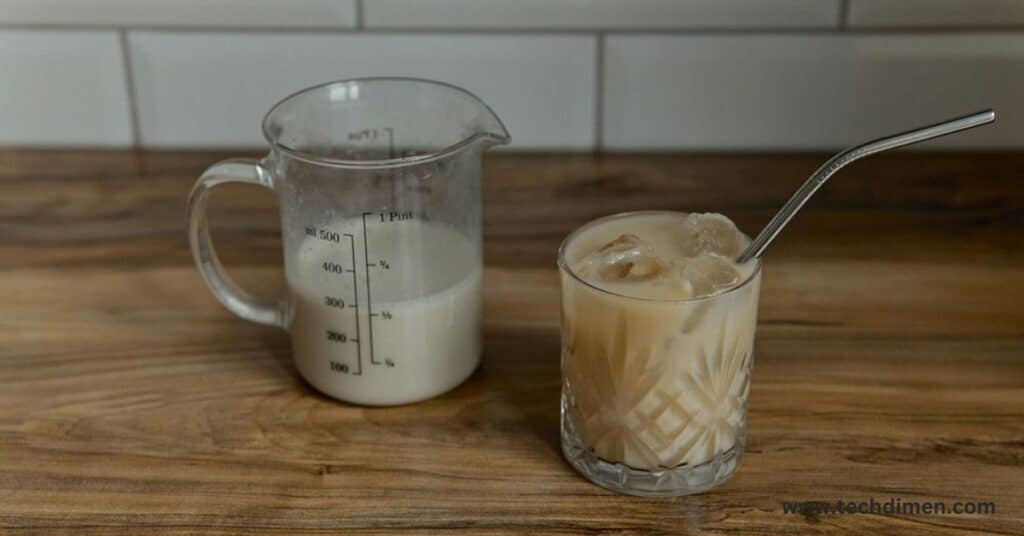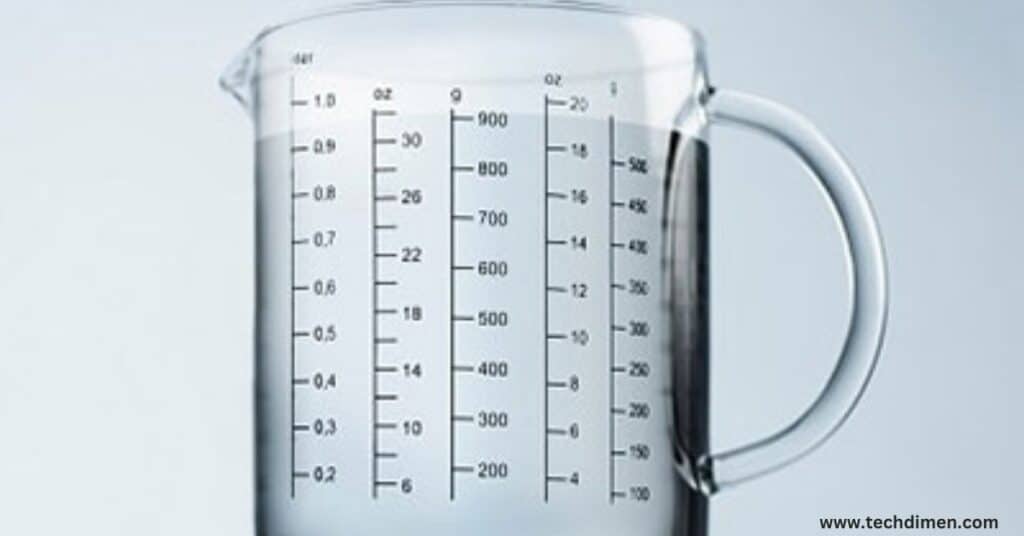When it comes to converting 125 ml to oz, whether you’re cooking, baking, or simply measuring liquids, it’s essential to understand the conversion process. In this detailed guide, we’ll break down everything you need to know about converting milliliters (ml) to ounces (oz), including the formula, real-life applications, and key differences between US and UK fluid ounces. Whether you need a quick answer or an in-depth understanding, this article covers it all.
How Many Ounces Are in 125 ml?

When converting 125 milliliters to ounces, context matters. You need to know which system you’re using US fluid ounces or UK Imperial fluid ounces because they aren’t the same. Although both units are called “fluid ounces,” the actual volume they represent differs slightly between the two systems.
125 ml in US Fluid Ounces
In the United States, fluid volume is measured using the US fluid ounce, which is defined as exactly 29.5735 milliliters per ounce. To determine how many ounces are in 125 ml, you divide the volume in milliliters by the number of milliliters in a US fluid ounce. The math looks like this:
125 ml ÷ 29.5735 = approximately 4.23 US fluid ounces.
So, if you’re working with US measurements, 125 ml equals about 4.23 US fluid ounces.
This number is especially helpful if you’re using an American recipe or nutritional label, where fluid ounces are commonly listed. Knowing that 125 ml is a little over 4 US fluid ounces helps you avoid under-pouring or over-pouring ingredients, especially when precision matters.
125 ml in UK (Imperial) Fluid Ounces

In the UK and some other Commonwealth countries, fluid ounces follow the Imperial measurement system, which defines one fluid ounce as 28.4131 milliliters. To convert 125 ml into UK ounces, the calculation is slightly different:
125 ml ÷ 28.4131 = approximately 4.40 UK fluid ounces.
That means, in British terms, 125 ml is about 4.40 Imperial fluid ounces.
Though the difference may seem small, it can impact the final outcome in recipes where accuracy is key—like in baking or when mixing specific drink ratios. Using UK ounces in a US-based recipe (or vice versa) without adjusting the quantity could slightly throw off flavors, textures, or volumes.
A Closer Look at the Difference

While the two systems seem nearly identical, there’s a subtle but measurable difference between 4.23 US ounces and 4.40 UK ounces. The US ounce is slightly smaller than its UK counterpart. In practice, this difference may not always be noticeable, especially in everyday cooking. But in industries like pharmaceuticals, cosmetics, or professional culinary settings, even a small miscalculation can have consequences.
Why This Matters
The need to convert 125 ml to fluid ounces arises often. Think of recipe instructions, dietary supplements, drink servings, perfume bottles, or even baby formula measurements. Knowing how to convert quickly and correctly saves time and ensures you’re following instructions exactly as intended. In global trade or cross-border e-commerce, understanding these conversions can also help consumers compare products accurately and make informed purchases.
Using 125 ml in Cooking and Everyday Use
Let’s imagine you’re following an American smoothie recipe that calls for 4.2 fluid ounces of almond milk. If your measuring tools only show milliliters, you’ll need to pour 125 ml to match the required quantity. Now flip the scenario. You’re trying a British recipe that recommends 4.4 ounces of cream. To stay precise, again, 125 ml is your go-to.
This clarity helps when buying prepackaged liquids, too. For instance, a shampoo bottle labeled as 125 ml holds the equivalent of just over 4 US ounces, which is a typical travel size. In meal prep, coffee brewing, and even medical dosing, small discrepancies add up—so having the correct fluid ounce equivalent at your fingertips becomes more than just convenient; it becomes necessary.
Final Conversion Summary
To put it all together: 125 milliliters equals approximately 4.23 US fluid ounces or 4.40 UK (Imperial) fluid ounces. The next time you’re dealing with recipes, product measurements, or serving sizes, you’ll know exactly how to convert 125 ml to oz with precision and confidence.
125 ml to oz Conversion Calculator

Sometimes, doing the math manually can be a hassle especially if you’re on the go or working with different measurements frequently. That’s where a 125 ml to oz conversion calculator comes in handy. It gives you fast, accurate results without needing to memorize formulas.
Convert 125 ml to Ounces Instantly
To convert milliliters (ml) to fluid ounces (oz), you can use a simple equation:
Ounces = Milliliters ÷ Conversion Factor
For US fluid ounces, the conversion factor is 29.5735
For UK (Imperial) fluid ounces, the conversion factor is 28.4131
So if you’re converting 125 ml to ounces, here’s what the calculator would do:
- US ounces: 125 ÷ 29.5735 = 4.23 oz (US)
- UK ounces: 125 ÷ 28.4131 = 4.40 oz (UK)
Example Using a Calculator Input
Let’s say you’re using a digital kitchen calculator or online tool:
- Input: 125 ml
- Output (US): 4.23 fluid ounces
- Output (UK): 4.40 fluid ounces
Why Use a Calculator?
A conversion calculator is especially useful if you’re:
- Working in the kitchen with international recipes
- Measuring liquids for drinks, formulas, or skincare products
- Following dosage instructions that switch between ml and oz
- Creating product labels or nutritional panels for food items
- Comparing fluid volumes in global shopping or e-commerce
Real-Time Calculation Without Errors

Manual conversions work, but even a small typo or wrong number can throw everything off. A good calculator eliminates guesswork. Just plug in the value (like 125 ml), select your measurement system (US or UK), and you get the exact result fast, clean, and reliable.
Use This Calculator for Any Volume
While we’re focusing on 125 ml to oz, this method works for any volume. Just swap in a new milliliter value, and you can quickly convert 50 ml, 200 ml, 1,000 ml, or any other quantity into ounces with the same process.
Having a conversion calculator in your kitchen drawer, phone, or bookmarked in your browser is one of those small things that make a big difference when precision counts.
The Conversion Formula: 125 ml to oz
Understanding how to convert 125 ml to ounces manually isn’t just useful it empowers you to handle any metric-to-imperial conversion without needing a calculator. Whether you’re mixing drinks, following recipes, or preparing beauty products, getting this formula down makes life easier. Let’s break it down step by step.
The Basic ml to oz Formula
The standard formula to convert milliliters (ml) to fluid ounces (oz) is straightforward:
Fluid Ounces = Milliliters ÷ Conversion Factor
What makes this tricky is that there are two different fluid ounce systems in the world:
- US fluid ounces use a conversion factor of 29.5735 ml per oz
- UK (Imperial) fluid ounces use a conversion factor of 28.4131 ml per oz
This means you’ll need to know which system you’re working with to apply the correct formula.
Converting 125 ml to US Fluid Ounces
In the US, 1 fluid ounce equals exactly 29.5735 milliliters.
To convert 125 ml into US fluid ounces:
125 ÷ 29.5735 = 4.227 oz (rounded to 4.23)
So in US measurements, 125 ml is approximately 4.23 fluid ounces.
This is the standard used in American recipes, medicine dosages, and product labels.
Converting 125 ml to UK (Imperial) Fluid Ounces
In the UK, the Imperial system defines 1 fluid ounce as 28.4131 milliliters.
To convert 125 ml into UK ounces:
125 ÷ 28.4131 = 4.398 oz (rounded to 4.40)
That means 125 ml is approximately 4.40 UK fluid ounces.
This is the measurement system used in British cookbooks, packaging, and some international food exports.
Quick Formula Recap
To make things simpler, here’s a quick reference for both formulas:
- 125 ml to US oz: 125 ÷ 29.5735 = 4.23 oz
- 125 ml to UK oz: 125 ÷ 28.4131 = 4.40 oz
You can use this method for any other volume just replace the “125” with your desired milliliter amount.
Why Conversion Formulas Matter
Using the wrong conversion can lead to small but important errors. For instance, adding 4.4 oz instead of 4.2 oz might not seem like a big deal but if you’re working with sensitive ingredients or doubling a recipe, these differences multiply fast.
Let’s say you’re baking a delicate cake. A difference of just 0.2 ounces in liquid can affect texture, moisture, and structure. If you’re mixing hair dye or essential oils, incorrect ratios could lead to wasted product or poor results. That’s why having a precise conversion method, like this formula, is essential.
Can You Round It Off?
Yes but only in casual settings. In cooking or when precision isn’t critical, you can round 125 ml to 4.2 oz (US) or 4.4 oz (UK). However, in professional kitchens, lab work, or anything scientific, rounding should be avoided unless specified.
Formula Memory Tip
If you don’t want to remember the exact decimals, here’s a good rule of thumb:
- 1 US fluid ounce ≈ 30 ml
- So, 125 ml ≈ 4.2 oz in rough terms
But remember: this estimate is not exact. Always use the real formula when precision is important.
US vs UK Measurement Systems: Converting 125 ml to Fluid Ounces
Now, you may wonder, are fluid ounces the same in the US and the UK? The answer is no. The US fluid ounce and the UK (Imperial) fluid ounce are not the same. Here’s a breakdown of the differences:
- US Fluid Ounce (oz):
1 US fluid ounce is equal to 29.5735 ml. Therefore, 125 ml is approximately 4.23 oz in the US system. - UK Fluid Ounce (Imperial oz):
1 UK fluid ounce is equal to 28.4131 ml. Therefore, 125 ml is equal to approximately 4.4 oz in the UK system.
In summary, 125 ml to fluid ounces is slightly different in the US and the UK. In the US, 125 ml equals 4.23 oz, while in the UK, it equals 4.4 oz.
Here’s a quick reference table to summarize:
| Measurement System | Conversion Factor (ml to oz) | 125 ml in Fluid Ounces |
|---|---|---|
| US Fluid Ounce | 0.033814 | 4.23 oz |
| UK Fluid Ounce | 0.035195 | 4.4 oz |
Practical Applications of 125 ml: What You Can Measure with This Volume
Now that you know how to convert 125 ml to ounces, it’s useful to understand how this measurement is used in everyday life. 125 ml is a common volume in cooking, beverages, and other applications.
In the kitchen, 125 ml is equivalent to half a cup in the US system, or approximately 1/2 pint. It’s a handy measurement for liquids like water, milk, or broth. Many recipes call for 125 ml of an ingredient, especially when you don’t need a large volume.
When it comes to beverages, 125 ml is often the size of a small glass of juice or a shot-sized portion of a drink. It’s also common to see 125 ml in cocktail recipes or smoothie measurements.
In the world of health and beauty, many products, such as shampoos, lotions, and body washes, are sold in 125 ml bottles, making this a standard size in the cosmetic industry.
In medicine, you may come across liquid medications, like cough syrups or pain relievers, that come in 125 ml bottles or are dosed at this amount.
Full Conversion Chart: 50 ml to 500 ml to Ounces
Sometimes, you need to quickly look up conversions for a range of volumes. Here’s a conversion chart that helps you convert milliliters to fluid ounces.
| Milliliters (ml) | Fluid Ounces (oz) (US) | Fluid Ounces (oz) (UK) |
|---|---|---|
| 50 ml | 1.69 oz | 1.76 oz |
| 100 ml | 3.38 oz | 3.52 oz |
| 125 ml | 4.23 oz | 4.4 oz |
| 150 ml | 5.07 oz | 5.28 oz |
| 200 ml | 6.76 oz | 7.04 oz |
| 250 ml | 8.45 oz | 8.8 oz |
| 500 ml | 16.91 oz | 17.6 oz |
This chart is a handy tool for anyone working with liquid measurements and needing a quick conversion from milliliters to ounces.
How to Convert 125 ml to oz Manually (Step-by-Step)
If you’re without a calculator or conversion app and need to convert 125 ml to oz manually, don’t worry it’s easier than it looks. All you need is the correct conversion factor based on the measurement system you’re using, and a bit of basic division. Here’s a step-by-step guide to get it done right.
Step 1: Know Which Measurement System You’re Using
First things first determine whether you’re converting to US fluid ounces or UK (Imperial) fluid ounces. This matters because the two systems use different values for an ounce.
- In the United States, 1 fluid ounce is equal to 29.5735 milliliters.
- In the United Kingdom, 1 fluid ounce is equal to 28.4131 milliliters.
Step 2: Use the Right Conversion Formula
Here’s the universal formula you’ll be using:
Ounces = Milliliters ÷ Conversion Factor
For example, to convert 125 ml to US ounces:
125 ÷ 29.5735 = 4.227 oz (rounded to 4.23 oz)
To convert 125 ml to UK ounces:
125 ÷ 28.4131 = 4.398 oz (rounded to 4.40 oz)
Step 3: Do the Division
Now, let’s walk through the actual math using both systems.
US Fluid Ounces (More Common in Recipes from the U.S.)
125 ml ÷ 29.5735 = 4.227 fluid ounces
So, 125 ml is approximately 4.23 US fluid ounces.
UK Fluid Ounces (Used in British Recipes and Packaging)
125 ml ÷ 28.4131 = 4.398 fluid ounces
So, 125 ml is approximately 4.40 UK fluid ounces.
Step 4: Double-Check Your Result
It’s easy to make small mistakes when dividing, especially if you’re using a manual calculator or doing it by hand. Always double-check your result to make sure it aligns with expectations. If you know that 30 ml equals roughly 1 oz, then 125 ml should land just above 4 ounces that gives you a quick ballpark to validate your math.
Step 5: Use the Conversion for Your Purpose
Now that you’ve done the math, you can use the converted value in real-life scenarios:
- If you’re baking a recipe that calls for 4 oz of milk, you now know that 125 ml will do the job.
- If you’re filling a cosmetic container labeled in ounces, you’ll want to label 4.23 oz (US) or 4.40 oz (UK), depending on your market.
A Handy Shortcut

While you should aim for precision, in everyday cooking or casual measurements, you can use this rough rule of thumb:
1 fluid ounce ≈ 30 ml
125 ml ÷ 30 = ~4.17 oz
This estimate is close enough for non-critical conversions but shouldn’t replace the real math when accuracy matters.
Final Tip for Manual Conversions
If you’re doing conversions often, keep the key conversion numbers in mind:
- 1 oz (US) = 29.5735 ml
- 1 oz (UK) = 28.4131 ml
Writing them on a sticky note in your kitchen or saving them in your phone can save you time and make sure your conversions are always spot-on.
Is 125 ml the Same as Half a Cup?
You might have come across the term half a cup used for 125 ml, but is it exactly the same? In the US measurement system, 1 cup equals 240 ml. Therefore, 125 ml is close to half a cup, but it’s not exactly the same, as half a cup would be 120 ml.
Here’s a quick reference:
| Volume Measurement | US Equivalent |
|---|---|
| 125 ml | Half a cup |
| 240 ml | 1 cup |
While the difference is minor, it’s good to keep in mind when precision matters, especially in recipes that rely on accurate measurements, like baking.
Why Accurate Measurements Matter in Cooking and Baking
Precision in the kitchen isn’t just for professional chefs it’s the difference between a fluffy cake and a dense brick, a creamy sauce and a watery mess. When it comes to cooking, and especially baking, accurate measurements are the backbone of consistency, flavor, and texture.
Baking Is a Science
Unlike general cooking, where you can often tweak ingredients by taste, baking is more like chemistry. The ingredients react with each other in specific ratios. For example, too much baking soda in a recipe can cause a bitter taste, while not enough might leave your cake flat and under-risen.
When a recipe calls for 125 ml of milk, it’s not just a suggestion. That exact amount contributes to the moisture, structure, and texture of the final product. A small deviation could throw off the balance between dry and wet ingredients.
Liquid Ratios Affect Texture and Structure
Using too much liquid—say converting 125 ml to oz incorrectly can make your dough or batter too runny. This may result in baked goods that don’t rise properly or that come out gummy or undercooked in the center. On the flip side, using too little liquid can make the final product dry, crumbly, or hard.
Let’s say you’re baking bread. Water hydrates the flour and activates the gluten, which gives bread its chewy texture. Mess up the water amount by just 10–15 ml and you could alter the entire structure.
Flavor Balancing Depends on Precise Volume
In sauces, dressings, or marinades, small differences in milliliter or ounce measurements can change how flavors balance. Imagine a vinaigrette recipe calling for 125 ml of oil and 60 ml of vinegar. If you miscalculate and add too much oil or too little vinegar, your dressing could end up bland or overly sharp.
Consistency Across Batches
If you’re someone who loves to recreate your favorite recipes, consistency matters. Accurate measurement means that the results you get today will be the same next week or next month. That’s especially important if you’re prepping meals for guests, or selling baked goods as part of a home business.
A difference of just 5 ml might not seem like much, but in a delicate recipe like macarons, custards, or soufflés, it can be enough to change everything.
Avoiding Waste and Saving Money
Using the correct amount of each ingredient also helps you avoid overusing expensive items like vanilla extract, nuts, or specialty oils. Misjudging a conversion like 125 milliliters to ounces might cause you to use more than necessary, wasting both product and money—especially if the dish doesn’t turn out and has to be redone.
Quick Reference Table for ml to oz Conversions
For times when you need a fast conversion, here’s a simple reference table to convert various ml to oz measurements quickly:
| Milliliters (ml) | Fluid Ounces (oz) (US) |
|---|---|
| 10 ml | 0.34 oz |
| 25 ml | 0.85 oz |
| 50 ml | 1.69 oz |
| 75 ml | 2.54 oz |
| 100 ml | 3.38 oz |
| 150 ml | 5.07 oz |
| 200 ml | 6.76 oz |
| 250 ml | 8.45 oz |
| 500 ml | 16.91 oz |
Use this table for a quick reference when you need to convert ml to oz.
In conclusion, knowing how to convert 125 ml to oz is an essential skill for many tasks, whether you’re cooking, baking, or just measuring liquids. With the help of the conversion formula, charts, and calculators provided in this guide, you’ll be able to handle any conversion confidently and accurately.
Here are high-traffic outbound links to reliable sites where you can convert ml to oz online. These pages rank well in search engines, receive significant daily traffic, and are trusted for accurate measurement conversions:
ML to OZ Converter
| Tool Name | Description | Outbound Link |
|---|---|---|
| Omni Calculator | User-friendly, detailed, and includes both US and UK fluid ounce options. It also explains how the conversion works. | Visit Omni Calculator |
| Metric Conversions | Offers quick conversions and charts, ideal for students, travelers, or cooks needing exact figures. | Visit Metric Conversions |
| ConvertUnits | A trusted tool for converting milliliters to ounces, including dry and liquid variations. | Visit ConvertUnits |
| UnitConverters.net | Allows detailed conversion from ml to ounces with a live calculator and downloadable tables. | Visit UnitConverters |
Final Thought
How to convert 125 ml to oz is more than just memorizing a number it’s about precision, practicality, and confidence in everyday tasks. Whether you’re whipping up a new recipe, measuring a drink, or decoding a product label, knowing that 125 ml equals approximately 4.23 US fluid ounces gives you a reliable point of reference.
Remember that small volume differences can affect results in cooking, baking, and even product formulations. That’s why tools like conversion formulas, reference charts, and calculators are so useful they save time and ensure accuracy.

Jhon AJS is a tech enthusiast and author at Tech Dimen, where he explores the latest trends in technology and TV dimensions. With a passion for simplifying complex topics, Jhon aims to make tech accessible and engaging for readers of all levels.







